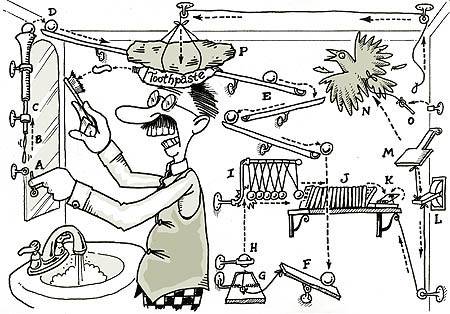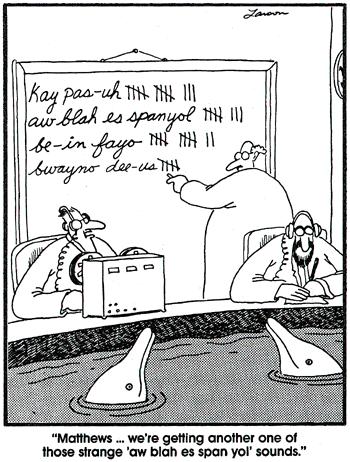Conversations Are The Fuel For The 21st-Century Selling System
Why are sales and marketing professionals working harder and longer than ever before? Why are they seemingly in a constant firefighting mode, moving from one fire drill to the next, one meeting to another?
We are in the middle of a major transformation in the B2B sales model. Your company is caught between a rock and a hard place because your investors want to see accelerated growth and improved margins. However, your customers have the same pressures, and all have some form of enterprisewide strategic procurement initiatives underway. Your goal: sell at a higher price. Their goal: buy only what they need at the lowest possible price. Something has to give.
In response to these tectonic forces, we find many companies have a variety of internal projects designed to combat the commoditization trend. Some common efforts include:
- Training salespeople to get access to executives.
- Creating "solution selling kits" (in marketing).
- Developing return-on-investment tools.
- Focusing on demand-generation campaigns.
- Developing sales-coaching frameworks.
- Creating more structured opportunity identification and account scorecards.
- Fine-tuning the customer relationship management (CRM) system to improve reporting and forecasting processes.
- Pricing and packaging exercises and corresponding negotiation training.
- Reinventing product marketing functions into "solution" marketing roles.
- Investing in branding and messaging programs.
Unfortunately, most organizations fail to properly coordinate these independent projects, with dramatic negative consequences. To meet growth objectives, companies hire more salespeople and put the burden of the customer relationship on the back of the sales force. To meet margin objectives, marketing resources are centralized and reduced. As a result, most organizations are unintentionally creating sales models that are excessively labor intensive, rife with inefficiencies, and not scalable, adding systemic problems these firms are trying to avoid.

Figure 1.0 With so many different activities to "drive sales," many selling systems are looking more like Rube Goldberg designs than actual business processes.
What Do You Do? You Must Manage The Complexity, Or You Will Confuse Customers
Value is communicated over time through a series of interactions between your company and your customer. However, this value isn't just magically transferred from corporation to corporation. It is achieved by the conversations between individual people from your company, and specific stakeholders within a given account. So, in reality, a B2B sale is really the synthesis of many discrete conversations, and value is best communicated when people are focused on a common goal: solving the client's problem.
What most organizations fail to address is the sheer complexity involved in corralling many discrete conversations into a consistent value communications strategy. To get a sense of the number of variables involved, consider some questions that must be answered at the point of sale:
- Who is affected by the problem?
- Why is the problem important to address now, and what is its relationship to other problems?
- When will the problem be addressed, and where is the organization in its decision-making life cycle?
- Where will the money come from to address the problem, and what resources are competing for the funding?
- How should the customer solve the problem, given their unique circumstances?
- What role will your company play in helping the customer solve the problem?
To make matters even more complex, most companies have solutions that can address multiple different problems, so this set of questions must be answered for each opportunity.
We all know that good conversations are dynamic, reciprocal, and most effective where there is trust between the people involved in the dialogue. To accomplish this, the salesperson must communicate information that is:
- Relevant: to the specific circumstances and realities of a given company.
- In context: to the roles and responsibilities of the individual(s) with whom you are having the conversation.
- Timely: in concert with where the customer is in their problem-solving process and to the relative importance of that issue to others that could gain investment.

Figure 2.0 – Most companies are so tuned to their own language and set of questions they can't actually hear what the clients are trying to tell them.
Some major organizations are making colossal mistakes when trying to address these "last mile" issues of sales effectiveness. Here are a few examples:
In Terms Of Relevance
A well-known business consulting firm was preparing for a meeting with the CEO of a $50 billion consumer packaged goods company. Salespeople met with the CEO and unveiled a plan that would cut costs by $5 million that year and reach up to $10 million in four years.
They were surprised when the CEO delegated them to someone four rungs below him. That company had a target to cut more than $2 billion out of its expense structure that year. For a company with revenue of more than $50 billion, $5 million in savings can come from renegotiating the paper supplier contract — certainly not something that is going to get any C-level executive excited, let alone the CEO.
In Terms Of Context
The sales and marketing leadership team of a multibillion-dollar IT services firm decided to send personalized letters from its CEO to "CxO"-level people in 50 key accounts. These letters were identical and addressed, "Dear CXO." I've yet to meet anyone with the title "CxO," and the viewpoints of a chief financial officer, chief technical officer, chief information officer, or chief marketing officer can be very different.
In Terms Of Timeliness
A manufacturing company sought to execute a business strategy to provide more customized services to its customers and move upstream in the decision-making process. A lot of resources were invested in thought leadership programs and executive selling training. But they missed a major gap: They never changed their opportunity management process. What happened? On the one hand, the new business strategy meant that salespeople needed to: 1) invest time working with their clients to identify funding sources, 2) partner with champions to gain access to real wallet owners, 3) develop compelling business cases to create a compelling need to release the funds, and 4) create new road maps for clients to understand when their value realization horizon would be. All of that takes work, and it requires support of sales management to invest the time with clients to develop these types of opportunities. On the other hand, the only resources salespeople could invest on those opportunities were defined by the opportunity management process. And because all opportunities were scored by BANT criteria (budget, authority, need, and time), those new types of tasks — which were critical to the development of these new opportunities — were never accounted for in the opportunity management system. The result: The processes in place actually managed salespeople away from doing what they had been instructed to do, despite the stated goals of both sales and business unit executives to sell higher and engage earlier in the cycle.
The Conversation Is The Core Design Point Of The 21st-Century Selling System
It's all about the conversation. Strong customer relationships are built over time, through a series of value-added interactions between various people from the buyer and seller organizations. However, most B2B companies fail to use the conversation with key individuals as the design point for go-to-market efforts. As a result, there are tremendous inefficiencies, redundant programs, and conflicting agendas that work against the goals of adding more value to buyers.
From March 3 to 5 in Scottsdale, Arizona, Forrester will be having its Sales Enablement Forum. The key theme is modernizing your selling system for the age of the customer. "Enough about me. Let's talk about you. What do you think of me?" approaches to selling will not work in the 21st century. What exactly is a selling system, and how do you build one around conversations, are the two major questions that I and my peers will be tackling. We hope you will join us so we can all start working on building a better selling system.